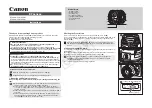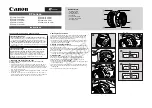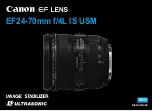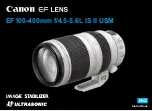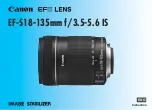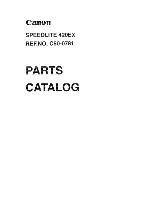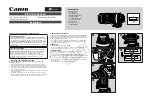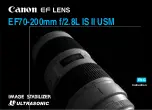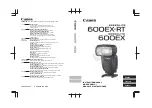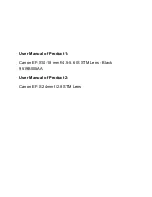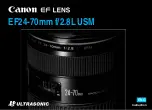
Piranha Color Camera User’s Manual
38
DALSA
03-032-10211-03
9/27/2007
Analog Processing
Optimizing offset performance and gain in the analog domain allows you to achieve
a better signal-to-noise ratio and dynamic range use. Perform all analog adjustments
prior to any digital adjustments.
command) is multiplied by the analog signal to increase
the signal strength before the A/D conversion (and before noise is added to the
signal).
command) or black level is an “artificial” offset introduced
into the video path to ensure that the A/D is functioning properly. The analog
offset should be set so that it is at least 3 times the RMS noise value at the current
gain.
Digital Processing
To optimize camera performance, complete all analog adjustments before digital
signal adjustments.
Fixed pattern noise (FPN) calibration (calculated using the
command) is used
to subtract away individual pixel dark current.
The digital offset (
command) enables the subtraction of the “artificial” A/D
offset (the analog offset) so that application of the PRNU coefficient doesn’t result
in artifacts at low light levels due to the offset value. You may want to set the
value if you are not using FPN correction but want to perform PRNU correction.
Photo-Response Non-Uniformity (PRNU) coefficients (calculated using the
or
commands) are used to correct the difference in responsivity of individual
pixels (i.e. given the same amount of light different pixels will charge up at different
rates) and the difference in light intensity across the image either because of the
light source or due to optical aberrations (e.g. there may be more light in the center
of the image). PRNU coefficients are multipliers and are defined to be of a value
greater than or equal to 1. This ensures that all pixels will saturate together.
command) and system (digital) gain (
command) are
used to increase image contrast after FPN and PRNU calibration. It is useful for
systems that process 8-bit data but want to take advantage of the camera’s 12 bit
digital processing chain. For example, if you find that your image is consistently
between 128 and 255DN(8 bit), you can subtract off 128 (
ssb 2048
) and then
multiply by 2 (
ssg 0 8192
) to get an output range from 0 to 255.
Background addition (
sab
command) is used to ensure a minimum output value,
and is added to the digital video after the system gain is applied.
The Effects of the Processing Chain on Calibration
The Processing Chain (as shown in Figure 7):
Video out = (([video in] x SAG + SAO - SDO - FPN) x PRNU – SSB) x SSG +
SSB
Calibration takes place at the output of the parameter being calibrated. If the parameters
further down the chain are not zero or unity, then the video out may not be as expected.
For example, if the analog gain is calibrated to an average of 3,000 DN using “CCG 2 0
3000” while SSB is 100, the average video output will be 2,900 DN not 3,000 DN.
This applies to:
CCG: calibrate analog gain (SAG) or system gain (SSG)
Summary of Contents for PC-30-02K80-R
Page 6: ...Piranha Color Camera User s Manual 6 DALSA 03 032 10211 03 9 27 2007...
Page 32: ...Piranha Color Camera User s Manual 32 DALSA 03 032 10211 03 9 27 2007 Exposure Modes in Detail...
Page 74: ...Piranha Color Camera User s Manual 74 DALSA 03 032 10211 03 9 27 2007...
Page 90: ...Piranha Color Camera User s Manual 90 DALSA 03 032 10211 03 9 27 2007...
Page 92: ...Piranha Color Camera User s Manual 92 DALSA 03 032 10211 03 9 27 2007...
Page 94: ...Piranha Color Camera User s Manual 94 DALSA 03 032 10211 03 9 27 2007...
Page 96: ...Piranha Color Camera User s Manual 96 DALSA 03 032 10211 03 9 27 2007...































